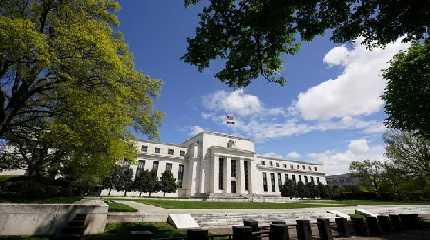
CAIRO, Sept 23 (NNN-MENA) – As the U.S. Federal Reserve raised its benchmark rates by 0.75 percentage points on Wednesday, the third such rate hike in a row, and the fifth increase in a year, Middle Eastern countries look set to suffer more from their already dramatic depreciation in the local currency and high inflation.
Yesterday, the Turkish lira was trading at a record low of 18.42 to the U.S. dollar, having plunged more than 50 percent from a year ago, and more than 35 percent since the beginning of this year.
Meanwhile, the Egyptian pound, believed as a relatively strong currency, has dived over 20 percent against the dollar, over the past six months, now hovering around 19.50.
The Lebanese currency sank to a new historic low of 39,000 Lebanese pounds to one dollar, on the parallel market, as opposed to the official pegged rate of 1,507 pounds. Lebanon has been struggling in an acute economic crisis and political deadlock since Oct, 2019.
Also on Monday, the Syrian central bank adjusted the official exchange rate of the Syrian pound to the dollar from 2,814 to 3,015, while the quotation on the parallel market had already reached 4,400.
Along with the currency tumble across Middle Eastern countries goes their soaring inflation.
The annual consumer price index (CPI) of Türkiye, a founding member of the intergovernmental Organisation for Economic Cooperation and Development (OECD), hit 80.21 percent in Aug, the highest level since 1998, according to the country’s statistics bureau, while in Tunisia, inflation rose for 11 consecutive months to 8.6 percent in Aug, hitting a three-decade high.
The year-on-year inflation in Israel, also an OECD member, rose to 5.2 percent in July, the highest since Oct, 2008.
The raging inflation and currency depreciation have left many ordinary people across the Middle East in financial straits, as almost everything, even including the stationery for children in a few countries, has become more expensive.
“The price of everything has doubled, so we only buy necessities,” a Turkish mother of two, said, as the new school year began.
“The dollar’s role as the primary currency used in global trade and finance means, its fluctuations have widespread impacts,” said an article titled Dollar’s Rise Spells Trouble for Global Economies, published in the Wall Street Journal.
“The U.S. dollar is experiencing a once-in-a-generation rally, a surge that threatens to exacerbate a slowdown in growth and amplify inflation headaches for global central banks.”
“If you get more dollar appreciation, it will be the straw that breaks the camel’s back” for “frontier markets on the tipping point towards crisis,” said Gabriel Sterne, head of emerging-markets research, at Oxford Economics.




